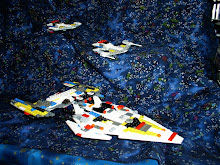Clearing out the temp files and cookies you can do from your browsers by launching the program (be it Internet Explorer, Firefox, Chrome, Opera, Seamonkey) and then pressing the Control-Shift-Delete keys to bring up the Delete Browsing History dialog in IE or the Clear All History dialog in Firefox. From there, you can select the items you want to delete. You can delete Temporary Internet Files (all the little files your computer collects while downloading a web page), Cookies (those little text files that keep track of sites and settings), History (every site your computer has visited since it was last deleted) and more. Those are the big three to clean up after.
Once or twice a year, a defragmenting of the hard drive is in order, though Windows 7 does this on a schedule. Windows 98 and XP had great little animations showing what was going on and a (rather inaccurate) guess at how long the defrag process would take. On an older, slow computer with a somewhat large hard drive, a defrag could take hours. Not something you want to do in a hurry. You can find the defragment feature by going to Computer, right click on the drive you want to defrag, click on the Tools tab and then the Defragment Now button. Vista doesn't tell you what it is doing, while Windows 7 puts more options in the control of the user.
While in that tab, you'll notice the section above called "Error checking." This scans the hard drive for errors and, if it can, corrects them. All hard drive have some errors right from the factor. But there's enough overhead added that any errors are usual very small and don't impact the capacity of the drive. Even in a modest 500GB (That's 500 billion bytes of storage, or five bytes for every star in the Milky Way galaxy!), there's a few hundred or thousand sectors (what the hard drive is divided up into to organize the data) that was are marked as bad. If too many sectors are bad, or there are bad sectors that store critical data, like how to start Windows, you'll see problems. This can be the infamous Blue Screen of Death to programs that don't run correctly, or cryptic error messages at boot like "No OS Found."
One button I don't use is the Backup button. It's easier to buy a good sized external hard drive, 500 to 1000GB (1TB), and just copy and paste your data from the My Documents folder to the external drive. A variety of options for backing up data are available, from a USB flash drive to plug in and forget external hard drives. I like the ClickFree C2 and C6. They differ in that the C2 only collects data while the C6 does a full hard drive image.
This is also a good time to remind people if they haven't to create their Windows Recovery disks. This process requires roughly 4 to 6 DVD-R or DVD+R disks and can take a couple of hours to complete. It can't be stopped once started and can be only be done once. That is to prevent piracy.
Right on the General tab of the hard drive is the Disk Cleanup button. This will offer to search the hard drive and look for files that aren't needed. This can include Downloaded Program Files, Temporary Internet Files, the Recycle Bin, log files (these keep track of events, such as installing or removing programs), and Thumbnails (the little pictures displayed for picture files).
Another topic I wanted to cover was how to add contacts to GMail. You can do this by clicking on the little red arrow to the right of where it says "GMail" above the
Contacts also has the GMail and Tasks, clicking the red arrow brings the drop down menu to access those.
The middle button with the icon of a person and the + is where to click to add a new contact.
And one more reminder: Update and run Quick scans of your anti-virus and anti-malware programs.


No comments:
Post a Comment